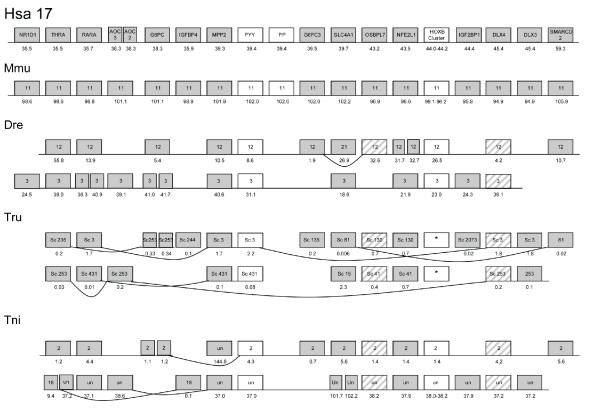Figure 2.
Conserved synteny between human chromosome 17 and chromosomes of other vertebrate species. Picture illustrating conservation of synteny between the species included in this analysis. Gene order is depicted based on the positions in the human genome. Genes located on the same chromosomes or scaffolds in other species are connected with lines in the figure. The names of the gene families are given in the boxes representing the human genes and chromosome number or scaffold number is given in the boxes representing the mouse and fish genes. Numbers below boxes indicate chromosomal or scaffold position in megabases. Two narrow boxes next to each other indicate local duplications. White boxes represent gene families not analyzed with phylogenetic methods in this study (NPY and Hox). Striped boxes indicate genes for which phylogeny is inconclusive but where the positional information is in agreement with the proposed paralogon. Boxes denoted "*" for Takifugu rubripes Hox clusters indicates that the Hox cluster is scattered on multiple scaffolds, due to incomplete assembly of the genome. Note that two separate parts of Tetraodon nigroviridis chromosome 2 displays conserved synteny with human chromosome 2 and 17.

